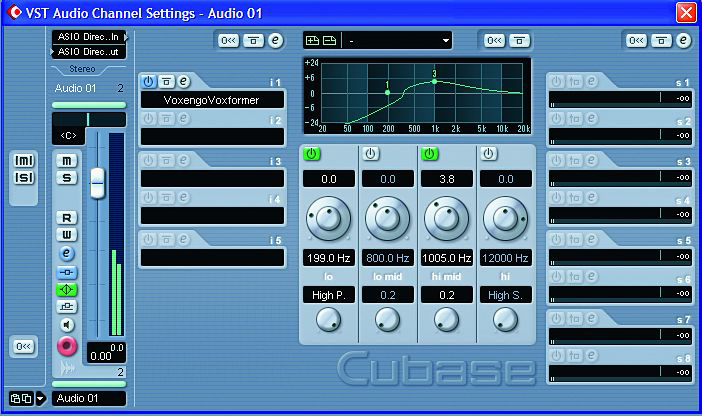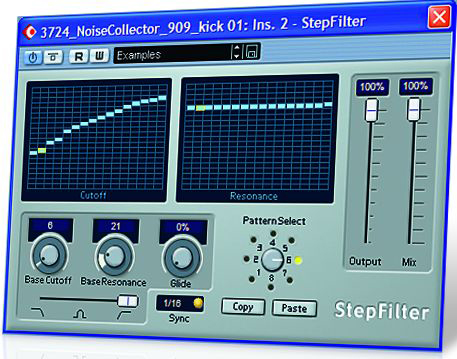24 happy hardcore tips
Hardcore? We know the score, and soon, you will too







Click here for all 'Production tips in every style' lessons
01. At the centre of hardcore tracks by the likes of Hixxy and Scott Brown lies the stomping kick drum. It's extremely important to get this element right as it has to be tough enough to make the track hard without overwhelming any melodic parts. The key to this is adding exactly the right amount of overdrive, so start with a subtle effect and gradually add more until it sounds just right. Compression can be used at this stage to tighten things up, or you could try changing the kick drum's release time.
02. If your kick drum is lacking bottom end, or has muddy, undefined bass frequencies, try layering it up with a less processed kick sample. Ideally, you'll want to add plenty of punch in the 100Hz area; judicious use of EQ will help you here. Remember, though, you can't use EQ to add something that's not in the original signal, so if you're having problems, use different samples.
03. Offbeat open hi-hats are often used to add pace and a rolling feel to hard techno kick drums, but if your hats are a little intrusive you can turn them down in the mix. As hi-hats exist predominantly in the high frequency domain, you can get away with cutting the low and mid levels using EQ without destroying the sound too much.
04. Other percussive elements such as claps and snares played on the offbeat of every other kick can add movement to the track, but these need to be quite low in the mix, and should add to the kicks or hats rather than dominate them. To make your claps more techno-like, try running them through quite a big reverb with the dry level turned down a bit - experiment with reverb times and feedback to get a variety of different effects.
05. To add emphasis to your fills you can double your kicks up with a cymbal. Adjust the cymbal sound's sustain level to get the right dynamics.
06. If you're using chopped up breakbeats under your main percussion, be careful with the arrangement - while a junglistic mash-up may sound alright on its own, it's got to work well with the kicks to be of any real use. Should you have trouble programming beats that sound fluid, try starting out with a simple two-step pattern (ie, kick, rest, snare, rest, rest, kick, snare, rest) and then develop it from there.
Want all the hottest music and gear news, reviews, deals, features and more, direct to your inbox? Sign up here.
07. When programming chopped up breaks for hardcore, try tying the low-pass filter cutoff to velocity. For best results, make sure you stop the velocity affecting the patch's volume level. Rapidly triggering the same note with increasing or decreasing velocity also creates a neat effect. This works with a high-pass filter, too, though avoid taking too much low-end away from the beat, rendering it weedy.
08. While snare or kick drum rolls still have their place in hard dance music, you really need to add something a little different to stop them sounding clichéd. For example, a phaser effect with automatable frequency can add a lot of movement to the sound, as can pitchshifter or degrader effects. A good rule of thumb when sourcing sounds for a drum roll is to keep the release times down to avoid notes running together.
09. If you're using heavily distorted gabba-style kicks, try running them through a high-pass filter sweep on the fill for a dirty techno effect.
10. Interesting rhythmic effects can be created on sounds with heavy reverb by changing the pre-delay time, although you may have to experiment a little to get the right timing for your track. Try varying any available damping settings to sculpt the sound into something a little bit different - changing your reverb's size setting will alter the sound more radically.
Get vocal
11. If you're using live vocals on your hardcore track but they don't sound loud enough, you'll probably find that running them through some compression works better than simply turning them up in the mix.
12. If you're using a short vocal snippet that becomes repetitive, try chopping it up and replaying it with a different rhythm. To develop this idea further you could stutter parts of the vocal, or use a little timestretching or pitchshifting to completely change the overall sound.
13. To make a spoken word vocal sound harder, treat it to some overdrive or degradation. If your overdrive effect has any kind of frequency controls, experiment with them, as you may find they'll help you create a harder or more intelligible effect. If the clarity of your vocals is important, consider mixing in some dry signal when using degrader-style effects on low bit-rate settings.
14. It's possible to turn a sung vocal into a totally twisted effect by stretching out a sustained note and looping it - use crossfade looping if possible as it delivers much smoother results. This sustained note can then be pitchbent in your sampler or gradually effected with plug-ins to create a handy bridge to be used before a drop or break.
15. For hard-style tracks the percussion is generally a bit more minimalistic, and is more about processing on the kick and the arrangement of the fills rather than layers of percussion. Using different velocity levels can add a dynamic touch to your kick drum fills, but you may find it plays havoc with extreme compression or gate settings.
16. Hoovers are as prominent as they've ever been in the hardcore scene, and knowing how to program your own can help you develop a more individual, face-banging sound. All you need are a couple of detuned saw or pulse oscillators with a high sustain level and short attack and release times on the amplitude envelope. From this template you can create a wide variety of hoovers rather than relying on standard presets or samples.
17. Adding a filter to your hoover is a handy way to build in a bit of movement.Low-pass filters are good for bringing the sound and out, but high-pass or band-stop ones are better for general sound shaping. Try tying the cutoff to your controller's mod wheel for high-precision control. Remember, you'll want to keep the resonance levels quite low unless you're going for an acidic effect.
18. If your hoover's sounding weedy, there are plenty of ways to beef it up. For a nastier sound you could use a parametric EQ with a high Q value to cut a notch into the sound. Alternatively, if your hoover doesn't have enough weight, try layering it up with a sine wave, but be careful it doesn't interfere with any basslines you've got playing at the same time.
19. One final hoover tip: for an old-school/ DnB-type effect, put your synth in mono mode, and turn its portamento value up to a fairly high level - it should take about 0.1 of a second to reach the new value. If the result just sounds too inebriated, turn the portamento value down for a somewhat more sober effect.
Catch my riff
20. If you're a piano-head you'll need a half decent piano sound, as a poor quality one can make your track sound cheap and nasty. 4Front Piano Module is a superb free VSTi that's very light on CPU usage and features the sort of clear, solid tones you'd expect from a pro keyboard.
21. Although the pounding kick drum provides a fair deal of hardcore's low-end, you're going to need a decent bass sound for the accompanying bassline. You'll probably want to keep the low-pass filter cutoff value quite low so the bass doesn't clash with the mid of the bassline. To beef up the sound, try adding some sub-bass via a sine oscillator, preferably at the lowest audible octave your bassline will allow.
22. Because hardcore's low-end is so busy, it's possible to really pull sounds out with astute use of EQ. If you've got a pad that needs bringing out in the mix, try a low-cut EQ at 200Hz or an EQ peak at around 1kHz. Be careful, however, as the delicate subtlety of a good pad patch can be ruined by overzealous EQing, so start out with small gain values that you can tweak until they sound perfect.
23. When using short, stab-style synth sounds, try playing your riffs on and then off the beat to get an idea of the different rhythms and vibes that can be fashioned. Variations in note length can add a bit more interest to a sound - turn up your patch's sustain level if this doesn't seem to have any effect.
23. A bit of pitched percussion can spice up your track - try pitchshifting a snare or whole breakbeat up an octave, then fine-tuning the pitch so it works with your track. Pitch the snare hits around to create complementary percussive melodies.
MusicRadar is the number one website for music-makers of all kinds, be they guitarists, drummers, keyboard players, DJs or producers...
- GEAR: We help musicians find the best gear with top-ranking gear round-ups and high-quality, authoritative reviews by a wide team of highly experienced experts.
- TIPS: We also provide tuition, from bite-sized tips to advanced work-outs and guidance from recognised musicians and stars.
- STARS: We talk to musicians and stars about their creative processes, and the nuts and bolts of their gear and technique. We give fans an insight into the craft of music-making that no other music website can.
